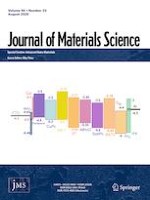05-05-2020 | Polymers & biopolymers
Exploring the relationship between applied fabric strain and resultant local yarn strain within the elastic fabric based on finite element method
Published in: Journal of Materials Science | Issue 23/2020
Log inActivate our intelligent search to find suitable subject content or patents.
Select sections of text to find matching patents with Artificial Intelligence. powered by
Select sections of text to find additional relevant content using AI-assisted search. powered by
